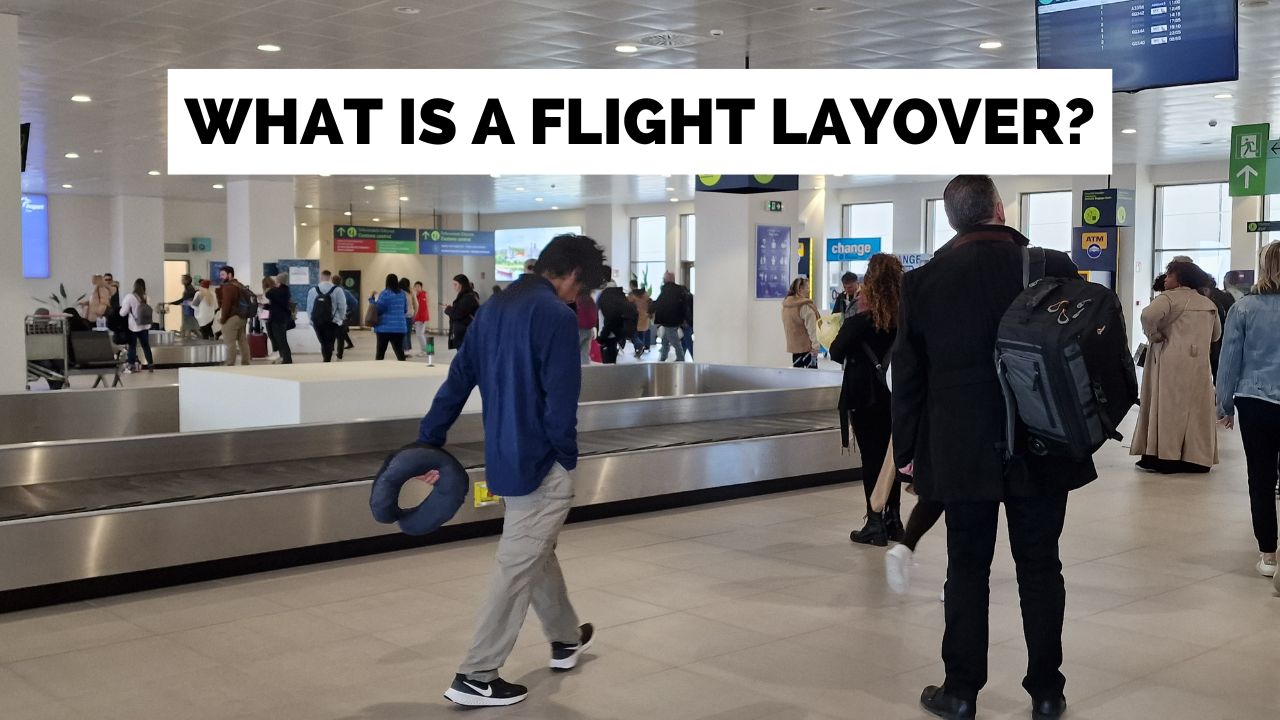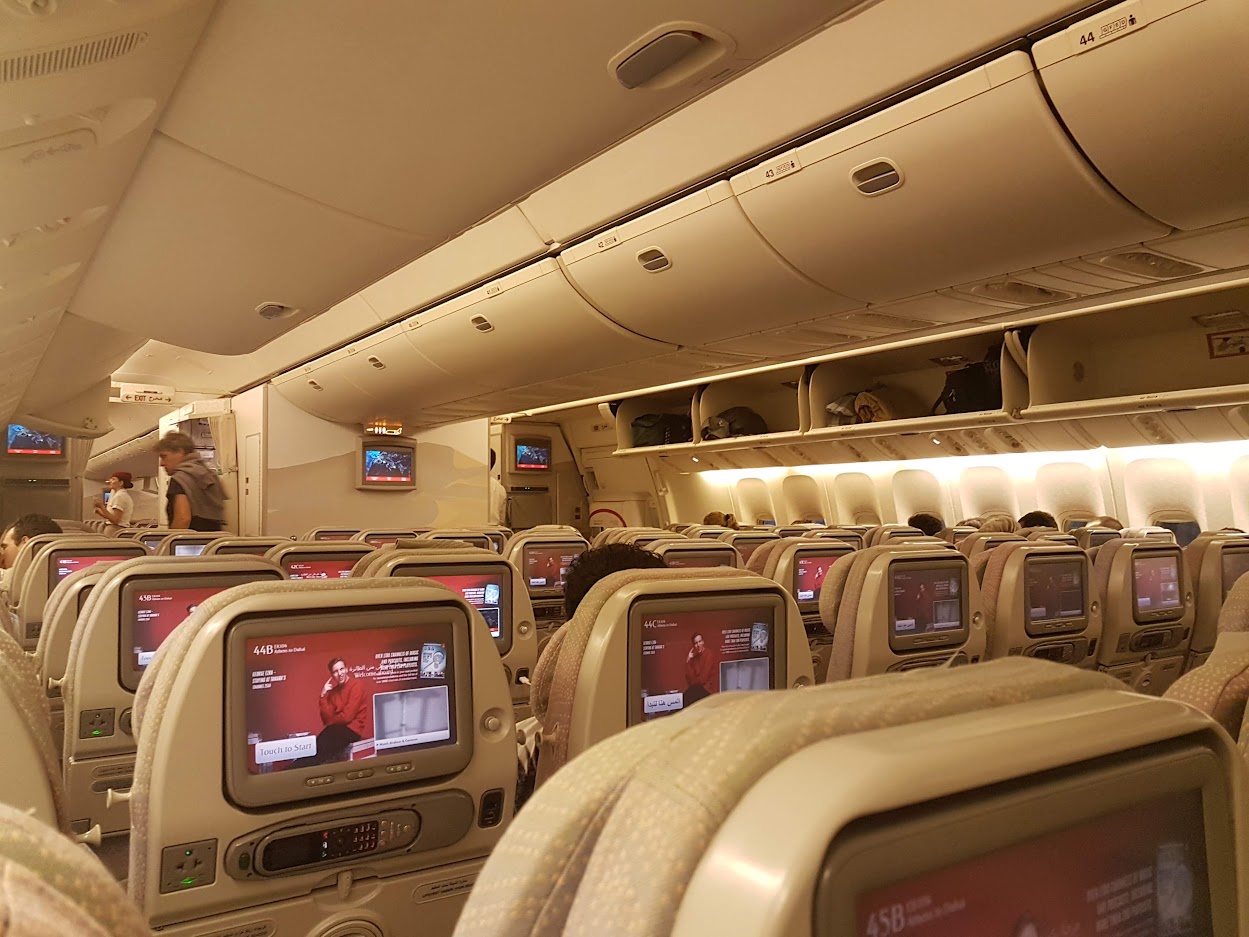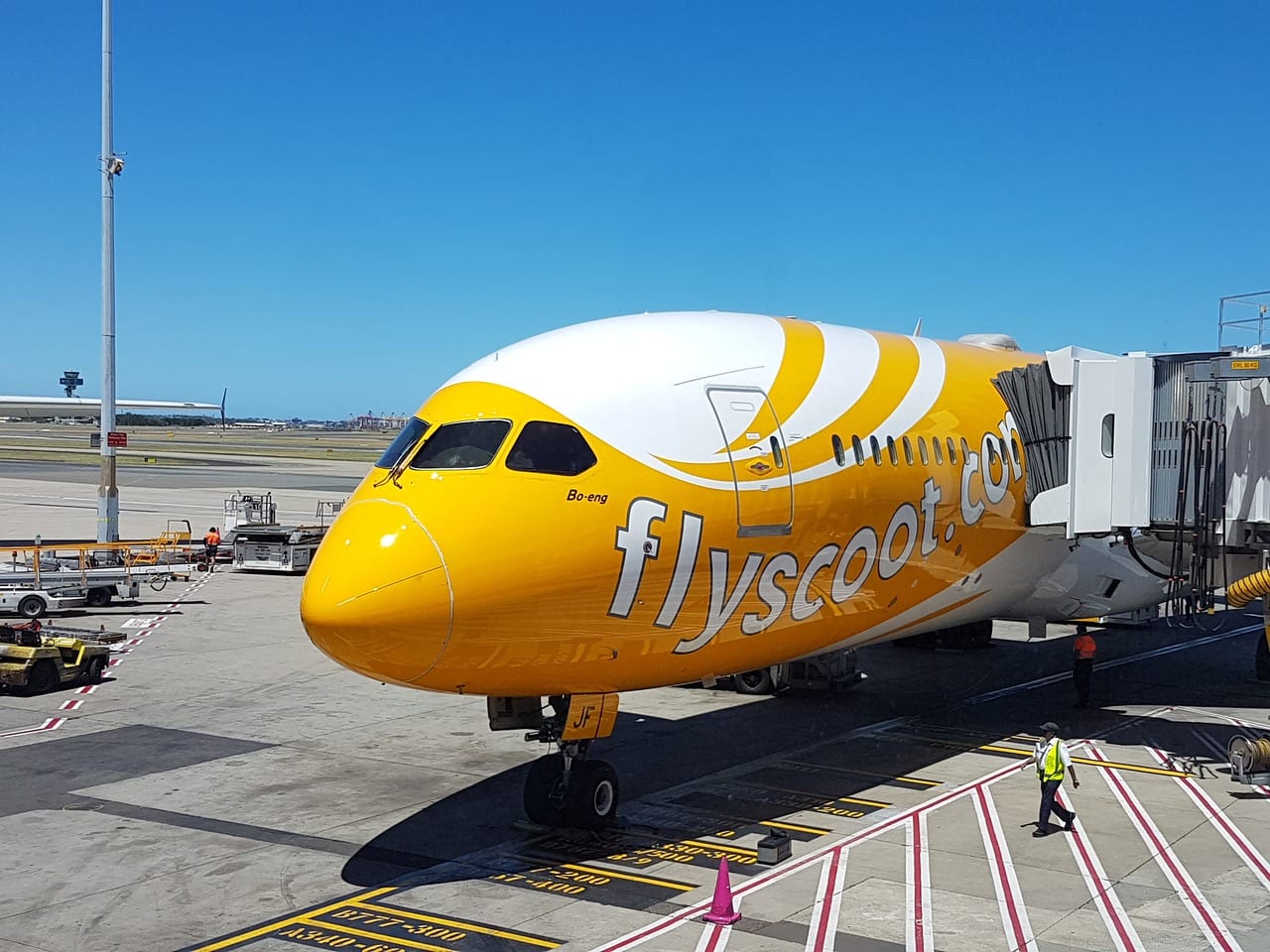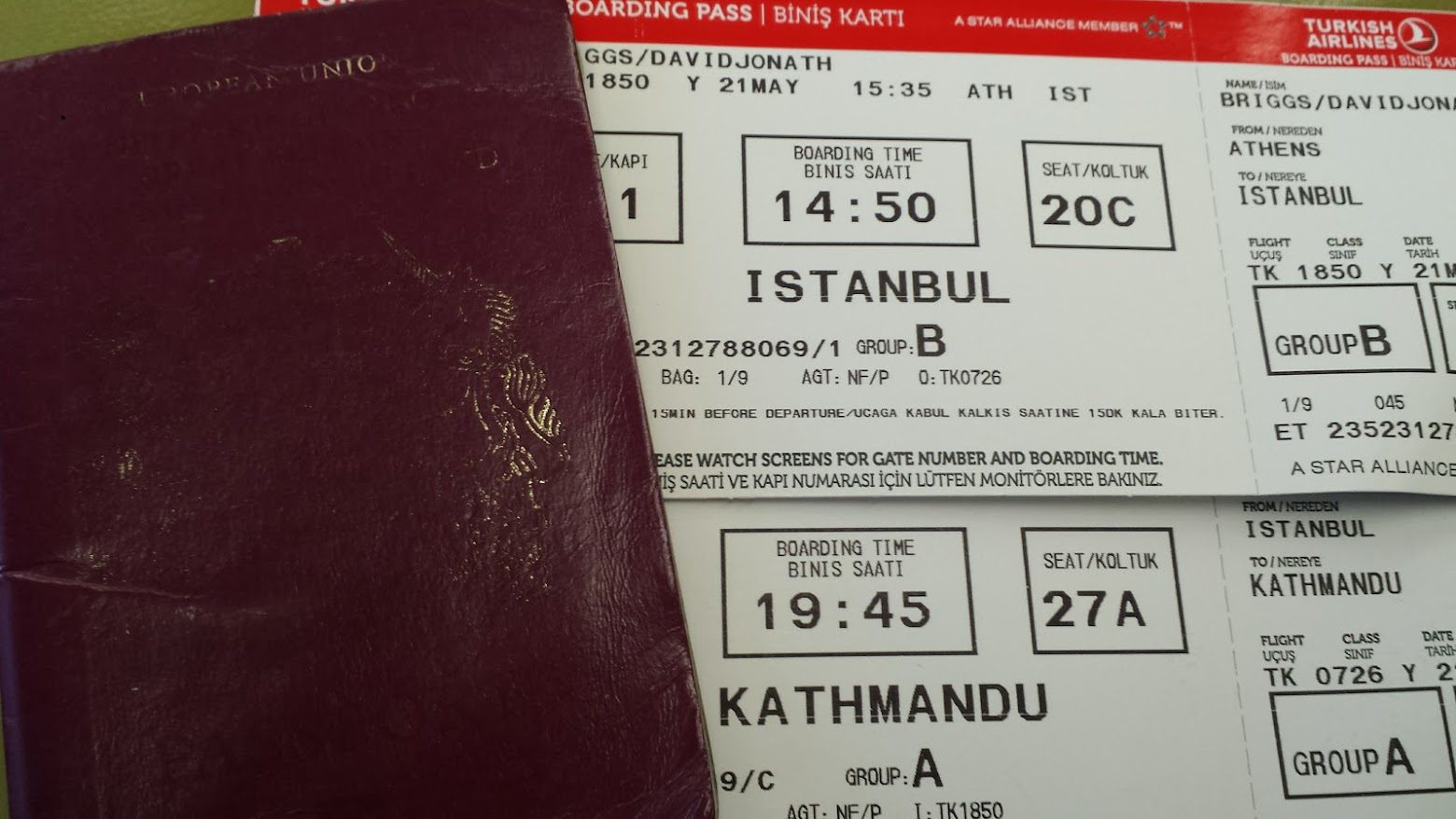Maximize your layover: Discover what happens during a layover, how to plan activities, and making the most of your travel connection.

Airport Layover Tips
Ever felt overwhelmed or stressed about layovers during air travel? You're not alone! Layovers are a part of life for many travelers, but with the right approach, they can be both enjoyable and stress-free.
In the latest of my series of air travel tips, I'll explain the basics of “how do layovers work”, explore the differences between domestic and international layovers, and share valuable tips to help you navigate connections and make the most of your layover time.

First though…
What Is A Layover At An Airport?
A layover flight is a multi-leg journey where passengers have a scheduled stop at an intermediate airport before proceeding to their final destination. During the layover, passengers may remain on the same plane or transfer to a different aircraft or even airline. When a layover extends beyond 24 hours, it is commonly referred to as a stopover.
During a layover, several things can happen depending on the duration and circumstances:
- Passengers may stay on the plane, allowing crew and other passengers to embark or disembark.
- Passengers might have the opportunity to stretch their legs, grab refreshments, or use restroom facilities within the airport terminal.
- Some passengers may need to transfer to another gate or terminal for their connecting flight.
- In longer layovers or stopovers, passengers may choose to explore the layover city, go sightseeing, or even stay overnight in a hotel.

Layover Flight Information: Know Before You Go
- Check the duration of your layover: Know how much time you have between flights to plan your activities accordingly.
- Research the airport layout: Familiarize yourself with the airport's layout, including terminals, gates, and facilities, to navigate efficiently.
- Understand visa and entry requirements: If you plan to leave the airport during a layover, ensure you meet the visa requirements of the layover country.
- Pack essentials in carry-on: Keep necessary items like medications, toiletries, a change of clothes, and chargers in your carry-on bag for convenience during the layover.
- Stay updated on flight schedules: Monitor any changes in flight timings to avoid missing your connection and plan your layover accordingly.
- Check baggage handling: Confirm whether your checked baggage will be automatically transferred or if you need to collect and recheck it during the layover.
- Research airport amenities: Identify facilities like lounges, restaurants, shops, or even sleeping areas in case you have a long layover and want to relax or make the most of your time.
- Stay connected: Ensure you have the necessary international roaming or Wi-Fi access to stay connected and communicate any changes or delays to your loved ones or contacts.
- Consider transportation options: If you plan to leave the airport during a long layover, research transportation options like public transit, taxis, or airport shuttles to reach your desired destinations efficiently.
- Plan your activities wisely: Depending on the duration of your layover, plan activities that align with the time available, such as exploring the airport, visiting nearby attractions, or simply relaxing before your next flight.
Related: Advantages and disadvantages to air travel
Understanding Layovers: The Essentials
Layovers can be thought of like pit stops on a road trip. They're necessary breaks in your journey that allow you to switch planes and continue onward to your final destination.
They're pretty common, especially if you're not flying to or from a major international hub, and they can range from just a few hours to multiple days.
An example of a common plane layover for Europeans flying to Australia, might be to take a layover stop in Singapore for example.

Layovers can also be a way to save money as you travel. Often, layover flights are more affordable than direct flights, making them an appealing option for budget-conscious travelers.
When you have a layover, you'll disembark from your first flight and then need to find out where your next flight departs from, hanging tight until the next boarding call to get on your new flight.
Occasionally, you may even have to either stay on the same plane, or reboard the same plane – it depends on the route and airline.
There are different types of layovers, including domestic and international layovers, each with their own procedures and time requirements.
Let's dive deeper into the differences between these two types of layovers and the essential information you need to navigate them with ease.
Related: How to stop jetlag
Types of Layovers: Domestic vs. International
A domestic layover is when you have a connecting flight within the same nation as your starting and ending points, while an international layover involves a connecting flight in a different country.
The main difference between these two types of layovers lies in the procedures and time requirements. International layovers typically involve going through customs and border protection, whereas domestic ones don't.
For domestic layovers, it's a good idea to give yourself at least an hour to ensure you can catch your next flight. On the other hand, international layovers require at least two hours to account for customs, immigration, and any potential delays.
Personally. I'd not take a connecting flight that left me less than three hours to complete the process.
Related: Tips for stress free travel
Domestic Layovers
Domestic layovers are generally easier and quicker to navigate compared to their international counterparts, as you don't need to go through customs and immigration.
However, it's still crucial to plan at least an hour for a domestic layover to account for any possible delays and ensure you won't miss your connecting flight.
During domestic layovers, your checked luggage will be automatically routed to the next plane, so you don't need to worry about collecting and rechecking it. This simplifies the process and allows you to focus on finding your next gate and enjoying your layover time.
Important note: Don't just assume the baggage will get transfered through though – make sure to ask the airline first!
Related: How to find cheap flights
International Layovers
International layovers can be more complex than domestic layovers, as they often require going through immigration and border control. It's wise to plan at least two to three hours for an international layover to account for these additional procedures and any potential delays.
The process of going through immigration during international layovers depends on a few factors, such as where you're flying from and to, your citizenship, and the rules of the airline you're flying with.
You may also need to collect your bags and recheck them during the layover, especially if you're flying with two different airlines on an international flight.
Keep these factors in mind when planning your international layover to ensure a smooth experience.
Related: International Travel Checklist
Navigating Layovers: Boarding Passes and Connections
During layovers, you'll need separate boarding passes for each flight. These can be obtained at check-in, and it's recommended to use online check-in to save time.
The handling of your checked luggage during layovers depends on the airline and your ticket booking. Normally, your baggage will be automatically transferred to your final destination if you book layover flights with the same airline or partner airlines.
This is very convenient for travelers and saves time. If your flights are with different airlines, you must remember to claim your baggage during the layover. You then have to recheck it for the next flight.

For international layovers in the US and Canada, you'll need to collect your luggage and recheck it, regardless of the airline.
This process can be time-consuming, so make sure to factor it into your layover planning. It's also important to always keep your carry-on luggage with you during layovers, as it contains your essentials and valuable items.
Note: When I flew from the UK to Alaska via Germany in order to begin a bicycle tour, I made it but all my luggage didn't! In fact, my luggage ended up on a longer trip via Barcelona first! This is why I recommend that your carry-on luggage contains enough essentials to get you through a day or two.
I also suggest investing in a GPS tracker for your luggage: Gego GPS tracker review
Luggage Handling During Layovers
Deciding whether to go through border control during layovers depends on factors such as whether it's a domestic or international layover, the country of your layover, and your intentions as a passenger.
For example, if you have a domestic layover within the same country, you typically don't need to go through border control, making the process much simpler.
Security requirements for layovers vary depending on the type of layover and the airport's policy. For domestic to domestic layovers, you usually won't need to go through security again, but for international layovers, it depends on the airport policy.
Always check the airport's security procedures in advance to ensure a smooth layover experience.
Security and Border Control Procedures
Worried about having a short layover? Keep in mind that it's best to allow a minimum of 60 minutes for domestic layovers and at least two or three hours for international flights to account for customs, immigration, terminal changes, and airport size.
It's always better to have some extra time on hand to avoid missing your next flight due to unexpected delays or issues.
Going through security during layovers depends on your specific situation. You must pass through security before your next flight, either when you check-in or at the gate.
Be prepared to present identification and provide any other information needed. Be prepared by finishing and disposing of any liquids over 100ml before going through security.
Making the Most of Your Layover Time
If you find yourself with a layover that's too short, consider changing your flight or following the tips we'll discuss in the next subsection to make the most of your limited time.
On the other hand, if you have an extended layover, see it as an opportunity to explore the city or take a day trip, or make use of the airport's amenities like lounges, restaurants, and shops.
Remember, layovers don't have to be a stressful or dull experience. With the right mindset and strategies, you can make the most of your layover time, whether it's short or extended, and turn it into a positive part of your travel journey.
Short Layovers
A short layover might not give you much time for getting your connecting flight. I remember one incident when I was trying to get to Easter Island that was very stressful!
Consider sitting at the front of the plane, especially the front left, for a quicker exit. Bringing only carry-on baggage can save you time, as you won't need to wait for your checked luggage at baggage claim.
Another tip for managing short layovers is to eat and use the bathroom on the plane, as this will help you avoid making extra stops during your layover.
Always ask flight attendants for gate information and airport staff for help navigating to your connecting flight, so you can reach your next gate quickly and efficiently.
Extended Layovers
With an extended layover, you can seize the opportunity to explore the city or take a day trip, immersing yourself in the local culture and making your layover a memorable experience.
However, if you prefer to stay within the airport, take advantage of amenities like lounges, restaurants, and shops to relax and recharge before your next flight.
To make the most of your extended layover, plan ahead and research activities or attractions near the airport. This way, you'll have a clear idea of how to spend your time and maximize your layover experience.
Just remember to factor in enough time to return to the airport and go through security before boarding your next flight.
Note: I'm often asked about layover possibilities when people land in Athens airport. By taking a pre-booked taxi it is just about possible to get to the Acropolis, see it, and get back to the airport in 4 hours. You'd still need another 2 hours to check in though, so Athens is only worth planning a layover for 6-8 hours in my opinion.
Related: Singapore Captions for Instagram
Dealing with Delays and Missed Connections
If your first flight is delayed, the airline will typically help you book the next available flight if both flights are on the same ticket or with the same airline or a partner airline.
However, if you've booked separate tickets for your layover flights, the responsibility for missed connections may fall on you, depending on the fault of the airline and whether the flights are on a single ticket.
In case of a missed connection, it's important to be proactive and try to secure a seat on the next available flight out. Remember, being first in line at the airport customer service desk can make all the difference in getting your travel plans back on track.
While dealing with delays and missed connections can be stressful, it's crucial to remain calm and take action as soon as possible. With the right mindset and the tips provided in this blog post, you can better navigate layovers and minimize the impact of any unexpected delays.
Related: Why do flights get cancelled
Frequently Asked Questions
Layovers don't have to be a dreaded part of air travel. With the right approach and strategies, you can embrace layovers as a positive and enriching experience, making your entire journey more fulfilling and enjoyable. Here's some commonly asked questions people have regarding layover flights and connections.
Do you have to check in again for a layover?
If you have a layover and both flights are part of the same itinerary and booked on a single ticket, you typically do not need to check in again. Your checked baggage is usually tagged through to your final destination, and you would proceed directly to your connecting gate after going through security. If your flights are with different airlines, and international though, you will have to check the luggage back in again.
How do layovers on flights work?
Layovers on flights work by providing a scheduled break or stop between two flights on a multi-leg journey. During a layover, passengers may remain on the same aircraft or transfer to another flight, depending on the airline and itinerary. The duration of the layover can vary from a short period, such as an hour or two, to several hours or even days for longer stopovers. Passengers may use the layover time to stretch their legs, grab refreshments, make connections, or even explore the layover city if time permits.
Do I have to collect my luggage on a layover?
If you have a layover, it depends on the airlines involved. Generally, if the flights are with the same airline, your luggage will automatically be transferred to your final destination. However, if you're flying with multiple airlines, then you might need to collect and re-check your baggage during the layover. It's always a good idea to confirm the baggage handling process with the airline or check the instructions provided to you during check-in.
Does layover mean you stay on the same plane?
No, typically when you have a layover, you will not stay on the same plane. A layover means that you change planes part-way through your journey. So, in most cases, you will have to disembark from the plane and transfer to a new one.
 – Dave Briggs
– Dave BriggsDave is a travel writer originally from the UK, and now lives in Athens Greece. As well as sharing these tips about layover flights, he's written many more blog posts offering tips and advice for travelers. Follow Dave on social media for more Greece travel insights: